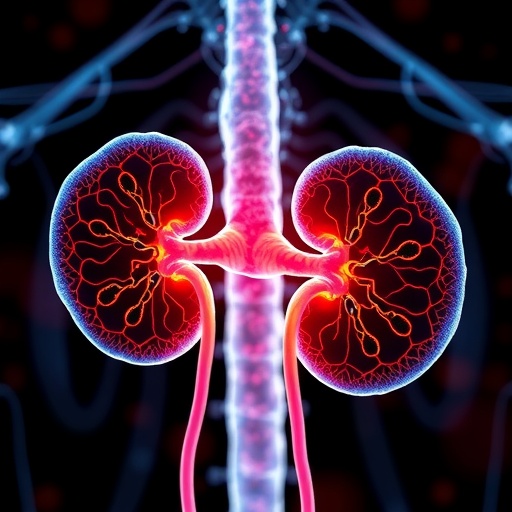
Credit: Penn Medicine
PHILADELPHIA – The combination of pembrolizumab and the checkpoint inhibitor known as epacadostat is leading to promising responses and is generally well tolerated in patients with triple-negative breast cancer, non-small cell lung cancer, squamous cell cancer of the head and neck, and several other cancers, according to researchers from the Abramson Cancer Center of the University of Pennsylvania. Their findings also showed that adding pembrolizumab to standard therapies for breast cancer improved the number of patients achieving a pathological complete response. The results of these combination therapy studies will be presented at the 2017 American Society of Clinical Oncology Annual Meeting in Chicago.
Pembrolizumab is an intravenous drug that targets the programmed cell death (PD-1) receptor – a protein that weakens the body's immune response by suppressing T-cell production. The drug was originally approved by the U.S. Food and Drug Administration for the treatment of advanced melanoma in 2014, and trials testing its use for other cancers are ongoing.
As part of a Phase 1/2 clinical trial, researchers from Penn and other institutions gave patients the drug in combination with epacadostat, an indoleamine 2,3 dioxygenase 1 (IDO1) inhibitor. The drug functions in a similar way to pembrolizumab by boosting T-cell production, but it's taken orally and targets a different protein. It's specifically designed to switch off IDO1, an immunosuppressive enzyme associated with tumor progression and shortened survival for patients.
Researchers broke down the results by cancer type and analyzed the outcomes, including:
- Advanced Urothelial Carcinoma (Abstract #4503)
- Squamous cell cancer of the head and neck (Abstract #6010)
- Non-small cell lung cancer (Abstract #9014)
- Triple-negative breast cancer and ovarian cancer (Abstract #1103)
- Advanced renal cell cancers (Abstract #4515)
They also looked at the drug's general safety across multiple tumor types (Abstract #3012).
"In each patient group, the combination did not add any significant increase in side effects compared to what patients experience with the PD-1 inhibitor alone," said Tara Gangadhar, MD, an assistant professor of Hematology Oncology in the Perelman School of Medicine at the University of Pennsylvania, who led five of the new analyses.
Separate research looked at the combination of pembrolizumab with standard treatments prior to surgery for patients with high-risk breast cancer (Abstract #506). As part of the multi-institutional I-SPY 2 trial, patients were randomly assigned to receive paclitaxel with or without the PD-1 inhibitor. The addition of pembrolizomab tripled the pathologic complete response rate in patients with triple-negative breast cancer, with 15 of 21 responding (71.4 percent) compared to 16 of 83 (19.3 percent) in the control group. The rate doubled in patients with hormone receptor positive breast cancer, with 7 of 25 responding (28 percent) compared to 13 of 88 in the control (14.8 percent).
"This is incredibly exciting news for patients with aggressive cancers and the beginning of generating new and better curative options at diagnosis," said Angela DeMichele, MD, MSCE, the Alan and Jill Miller Professor in Breast Cancer Excellence in the Perelman School of Medicine at the University of Pennsylvania and Chair of Trial Operations for the study.
DeMichele also noted that this trial uncovered new, previously unrecognized side effects of pembrolizumab. Four patients experienced adrenal insufficiency while another had hypophysitis – an inflammation of the pituitary gland.
"These findings reflect a growing body of knowledge about how these drugs interact with the immune system that will lead to safer use of PD-1 inhibitors in future studies," DeMichele said.
The Abramson Cancer Center is leading a new trial investigating pembrolizumab in head and neck cancer patients who are at high risk for recurrence or those with low-volume residual disease. Joshua Bauml, MD, an assistant professor of Hematology Oncology, is the principal investigator of the multi-site trial, which is currently enrolling patients. He will present an overview at the upcoming ASCO meeting (Abstract #TPS6095).
"PD-1 inhibitors have already been shown to be effective in recurrent and metastatic head and neck cancer, but we want to specifically look at patients who have curable disease but are at risk for relapse," Bauml said. "In patients who have undergone front-line treatments, the standard approach calls for observation. We want to know if giving them this inhibitor can be an effective way to take an active role in preventing relapse."
###
Gangadhar's research was supported by Incyte Corporation. Bauml's trial is funded by Merck, which manufactures pembrolizumab.
Penn Medicine is one of the world's leading academic medical centers, dedicated to the related missions of medical education, biomedical research, and excellence in patient care. Penn Medicine consists of the Raymond and Ruth Perelman School of Medicine at the University of Pennsylvania (founded in 1765 as the nation's first medical school) and the University of Pennsylvania Health System, which together form a $6.7 billion enterprise.
The Perelman School of Medicine has been ranked among the top five medical schools in the United States for the past 20 years, according to U.S. News & World Report's survey of research-oriented medical schools. The School is consistently among the nation's top recipients of funding from the National Institutes of Health, with $392 million awarded in the 2016 fiscal year.
The University of Pennsylvania Health System's patient care facilities include: The Hospital of the University of Pennsylvania and Penn Presbyterian Medical Center — which are recognized as one of the nation's top "Honor Roll" hospitals by U.S. News & World Report — Chester County Hospital; Lancaster General Health; Penn Wissahickon Hospice; and Pennsylvania Hospital — the nation's first hospital, founded in 1751. Additional affiliated inpatient care facilities and services throughout the Philadelphia region include Good Shepherd Penn Partners, a partnership between Good Shepherd Rehabilitation Network and Penn Medicine.
Penn Medicine is committed to improving lives and health through a variety of community-based programs and activities. In fiscal year 2016, Penn Medicine provided $393 million to benefit our community.
Media Contact
John Infanti
[email protected]
215-301-5221
@PennMedNews
http://www.uphs.upenn.edu/news/
############
Story Source: Materials provided by Scienmag





